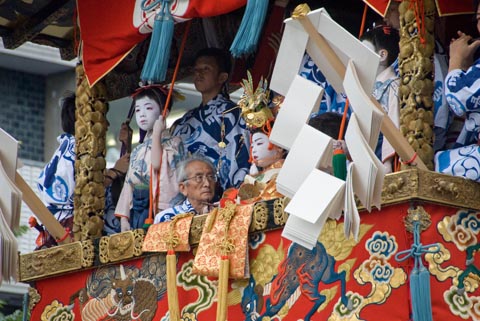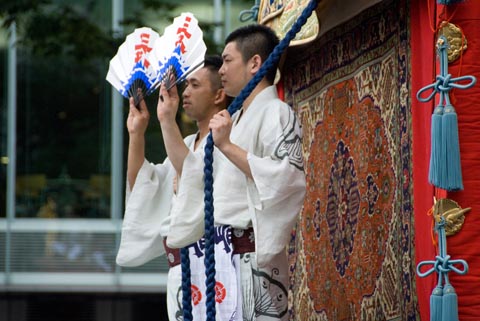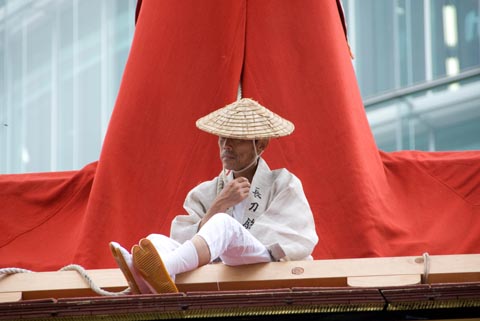A new year is beginning, and we decided quite a while ago that this will be our last year in Japan. That’s right, we’re going home (or somewhere new) in August. As the days pass, I can see the signs of the seasons changing. In the fall, we had our last gorgeous Japanese grapes, our last Japanese persimmons, our last Japanese nashi. Apples are still plentiful at the store, but they’re not as crisp and fragrant as the fall varieties. Just the other day I saw the first ume blossoms of the year. Our last ume (though these will be blooming for months still).
Thinking about all of the wonderful sights, smells, and tastes in Japan that come and go with the seasons, I couldn’t help but realize that we’ve fallen into a routine. I try to make interesting, exciting dinners, but our fall-back easy dinner is rice, salad, miso soup, and grilled salted fish. Ichiyaboshi hokke, shio-jake, shio-saba, sometimes a miso-zuke or kasu-zuke gindara… but the routine is always the same: out of the package and into the broiler. There are so many delicious varieties of fish and seafood available here; they’re super-fresh and really cheap compared to back home in Colorado. So I’m on a mission to eat seafood twice a week. Why twice a week? Well, that’s because burnable garbage day is twice a week (Monday and Thursday), and twice a week will demand some creativity whereas once a week I could fall victim to my own routine-loving laziness. So seafood night is Sunday and Wednesday (so I can put out any bones, shells, or guts in the next day’s trash). It’s not just good for my tastebuds, seafood is full of good stuff like protein, omega-3s, and vitamin E. And seafood is easier on the environment (in some ways) than meats like pork and beef.
Of course, I don’t want my new dining plan to be wreaking havoc on the seas, so I’ll try to stick to sustainable fish as much as possible. My go-to source is usually Monterey Bay Aquarium’s seafood watch list. Of course, their lists are for customers based in the US, so it’s a little more challenging to find out what’s a good choice and what’s to avoid in Japan, but I’ll do my best. Luckily, I can find the country of origin labeled right on every package at the store here.
While we’re at it, we’re also having vegetari-ish night once a week too. So far it’s been Mondays, but I may be moving my weekly Japanese lessons to Monday night so vegetari-ish night will have to get the boot (probably to Thursday or Saturday). Vegetari-ish night means a mostly vegetarian meal, but since we’re not strictly vegetarians ourselves I’m willing to make exceptions for some flavorful background players like dashi, fish sauce, Worcestershire sauce (well, I don’t have any anyways, but if I did it would be ok), oyster sauce, small amounts of tiny dried shrimp or scallops, or stock (since it’s made from an item that would otherwise be wasted; plus my freezer is tiny, so I can’t keep my chicken stock around forever… if I’ve got it, I’ll use it). There is some continuing debate over whether a small amount (an ounce per person) of bacon, say in a lentil soup or veggie chowder, would still meet the goals of our plan, but we’ve had enough other veggie meals in the week that a little bacon hasn’t thrown any kinks into the plan yet.
So far (well, it’s only been a few weeks), seafood night and veggie night have been a big hit. I feel like I’m thinking more creatively and we’re enjoying the bounty that’s available locally. And I feel like we’re eating more healthily and environmentally.
The inaugural veggie night dinner was saag paneer with homemade paneer (it was a holiday–this is definitely not an after-work recipe if you’ll be making the paneer yourself). The paneer recipe is adapted from Jeffrey Alford and Naomi Duguid’s Mangoes and Curry Leaves, and the saag recipe is based on Madhur Jaffrey’s recipe and this recipe from Olive magazine. Instead of water, I used some of the leftover whey from making paneer as the liquid in the recipe. I liked being able to use something that would have gone to waste otherwise, but it was a little bit more sour than I expected (because of the vinegar in the whey). In the future I’ll probably use a 50/50 mix of whey and water.
Saag Paneer
1 liter milk
1 tablespoon fresh lemon juice or vinegar (I use rice vinegar)
1 to 2 bunches fresh spinach, washed and trimmed
vegetable oil or butter
1 yellow onion
5 garlic cloves
1 to 2 inch piece of fresh ginger
salt
1 tablespoon tomato paste
seeds of 10 cardamom pods
6 cloves
1 tablespoon ground coriander
1 tablespoon ground cumin
1 teaspoon turmeric or curry powder
1/2 teaspoon freshly ground black pepper
dried New Mexico green chile powder to taste
1 cinnamon stick
2 bay leaves
1 teaspoon garam masala
Place the milk in a large pot and heat over medium heat, stirring occasionally to prevent sticking, until it’s just below the boil. Take off the heat. Add the lemon juice and stir with a clean wooden spoon. You will see the curds separate out, looking like blobby bits floating on the surface. Keep on stirring the milk for several minutes, then set aside.
Moisten a piece of cheesecloth or loose-weave cotton cloth (I use Japanese sarashi cloth), place a sieve over a large bowl, and line it with the cloth (fold the cheesecloth so you have several layers to line the sieve). Pour in the the milk mixture. Pour cold water over it to rinse off the taste of the souring agent, then let drain. The liquid will gradually drain through the curds into the bowl: pull the cloth tightly around the curds to press out extra liquid, or tie the top of the cloth to make a bag and hang it on a hook over the bowl to drain. You will have soft moist cheese in about 30 minutes. Transfer to a clean bowl and scrape any remaining curds off the cloth into the bowl.
Next, working with clean wet hads, shape the curds together into a square block. Wrap tightly in cheesecloth or a clean cotton cloth and place on a plate. Put a heavy weight on top to press the moisture out of the cheese. From time to time, pour off any liquid that has accumulated. After 4 hours or so, the cheese will be very firm and drier. Make the paneer a day ahead of time or set aside while you make the saag.
Chop the onion, ginger, and garlic finely. I use a stick blender in a tall, glass measuring cup. Or use a food processor. Blanch the spinach in a large pot of boiling water and then chop (I don’t have a food processor, but you could use one here to chop the spinach finely). Grind the cardamom seeds and cloves in a spice grinder (you can use whole spices, but then you would need to fish them out before you puree the saag. Of course, it’s not a problem if you puree the spinach in a food processor before adding it to the pot. Hmm…).
Heat a large pot over medium heat. Add a bit of butter or vegetable oil. Cook the onion, garlic, and ginger with a pinch of salt until softened and golden. Next add the tomato paste, cardamom, clove, coriander, cumin, turmeric, black pepper, chile powder, and cinnamon stick. Stir and cook for about a minute until fragrant. Add the chopped spinach, bay leaves, and about half a cup to a cup of water. Stir and cook until the spinach becomes tender and well-cooked (at least 20 minutes). Stir occasionally and add more water as necessary. If you haven’t yet, fish out the bay leaves and cinnamon stick and puree the saag. Be careful, it’s hot! Add garam masala and season with salt to taste.
Cut the paneer into bite-sized cubes or triangles. Heat some oil in a cast iron frying pan. Add the paneer to the pan and brown. Turn and continue cooking until hot and browned. Add the paneer to the saag and stir gently (the homemade paneer may crumble easily).
Serve hot with naan or rice.











































